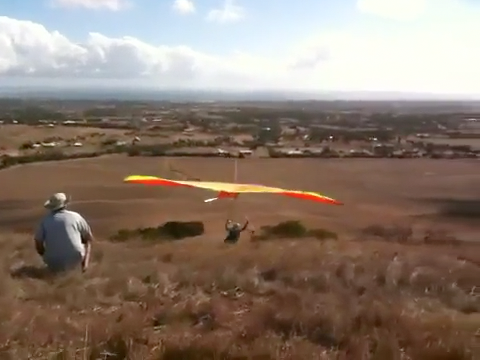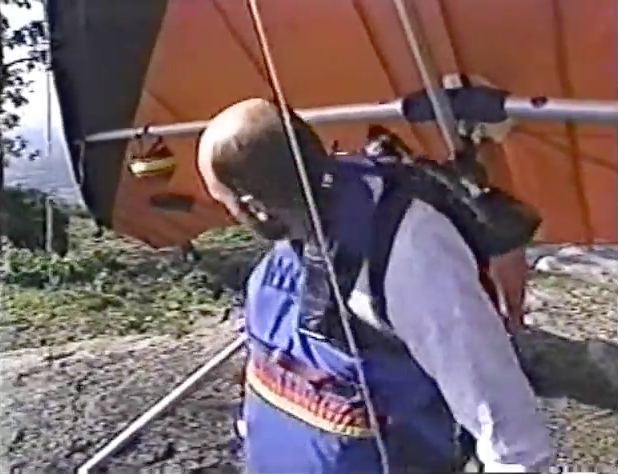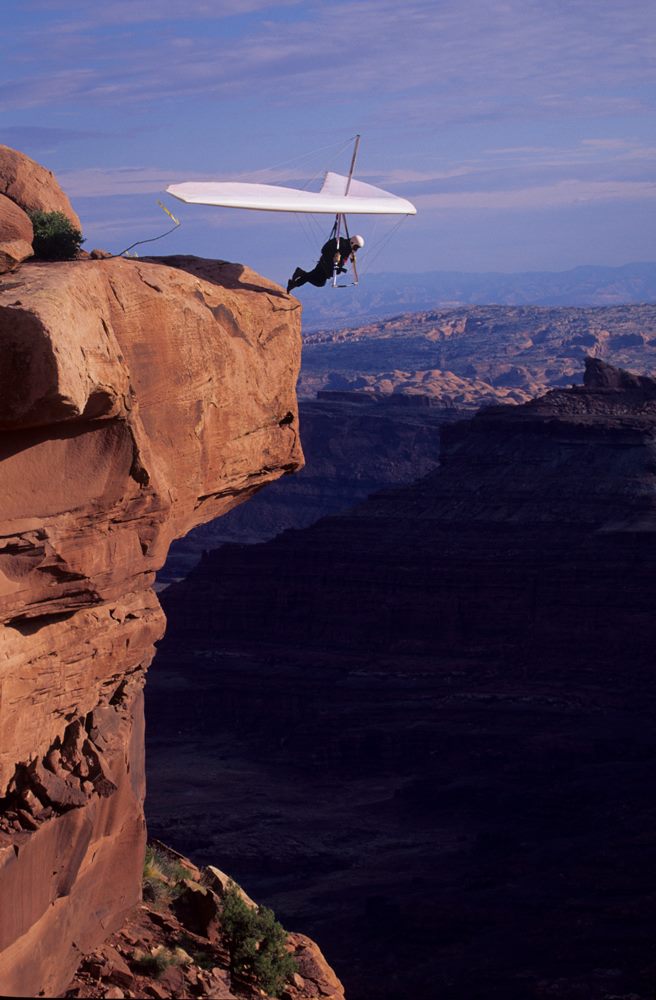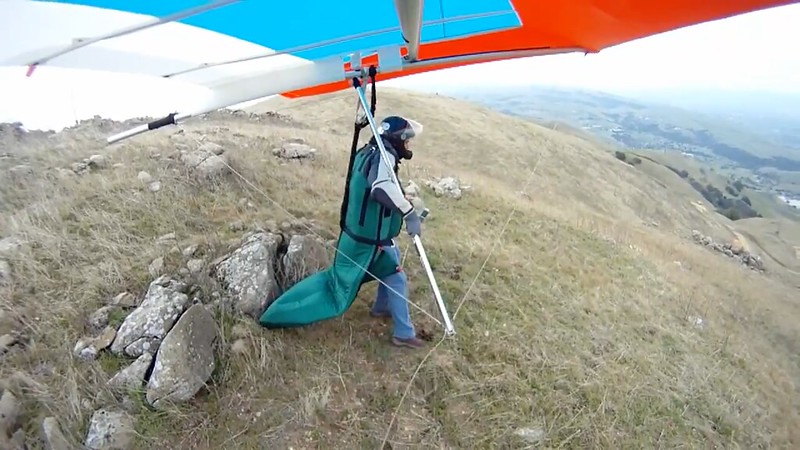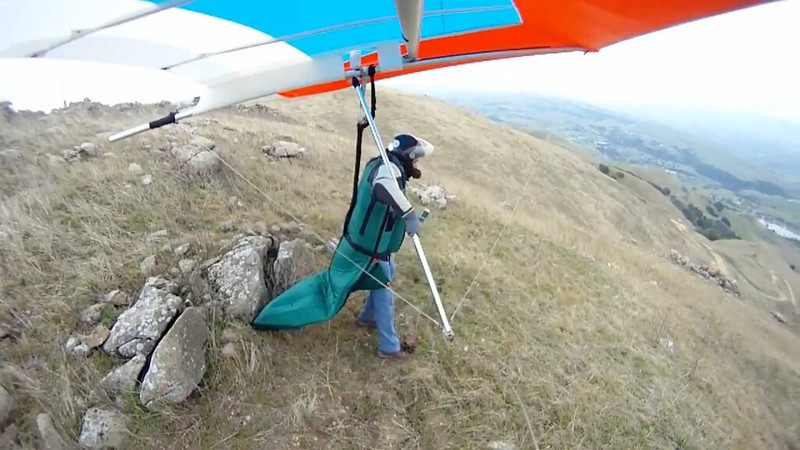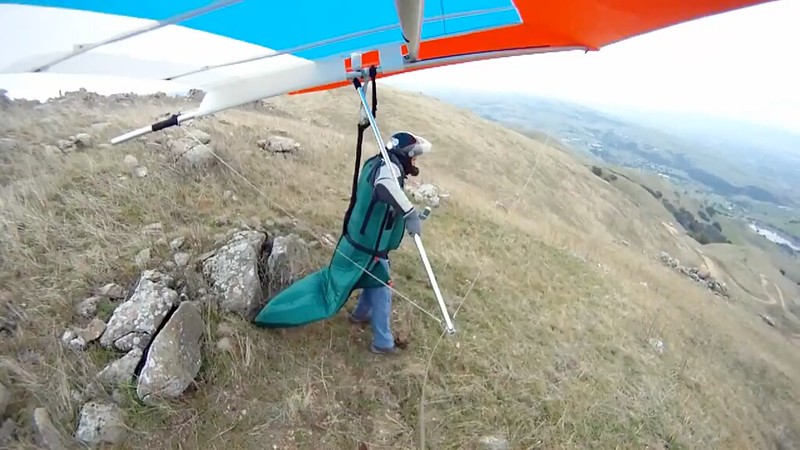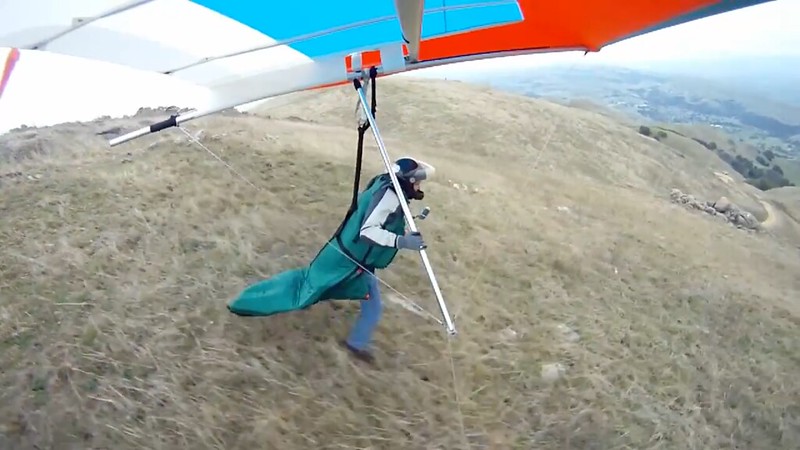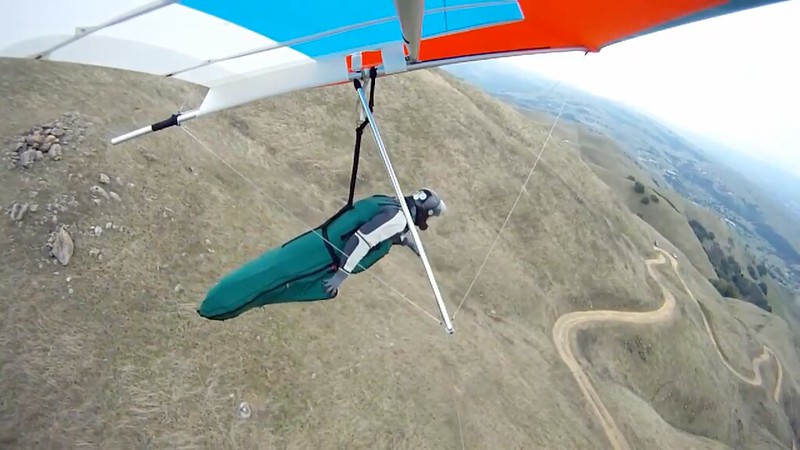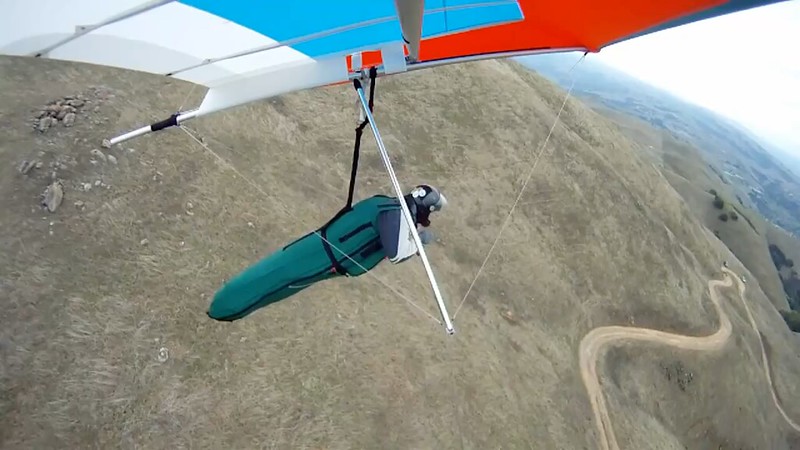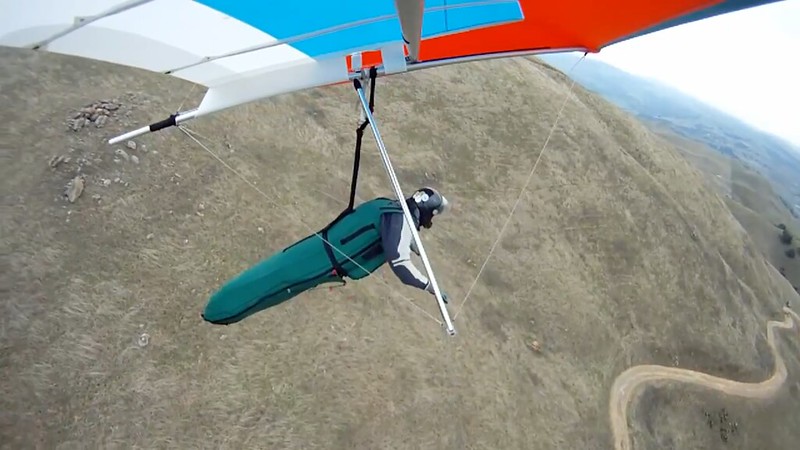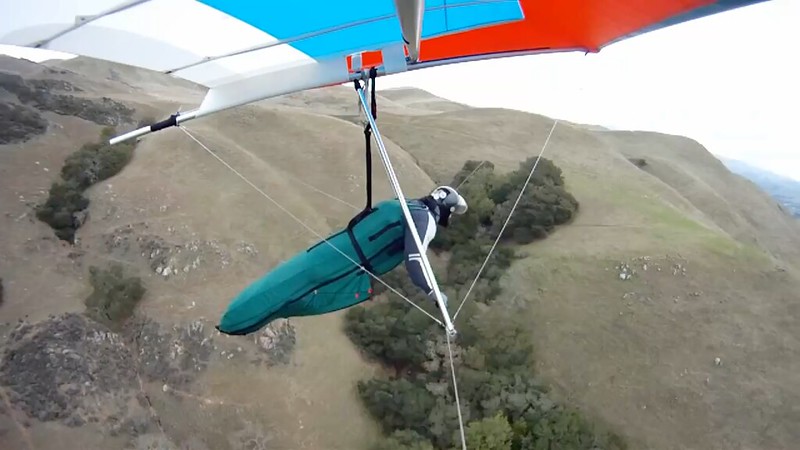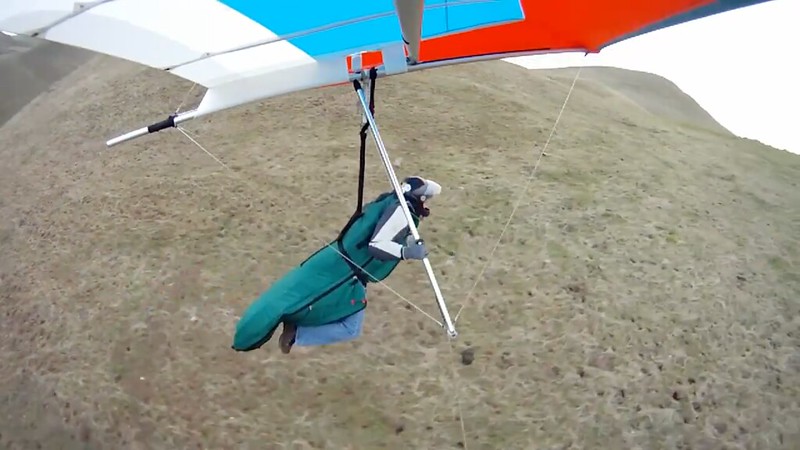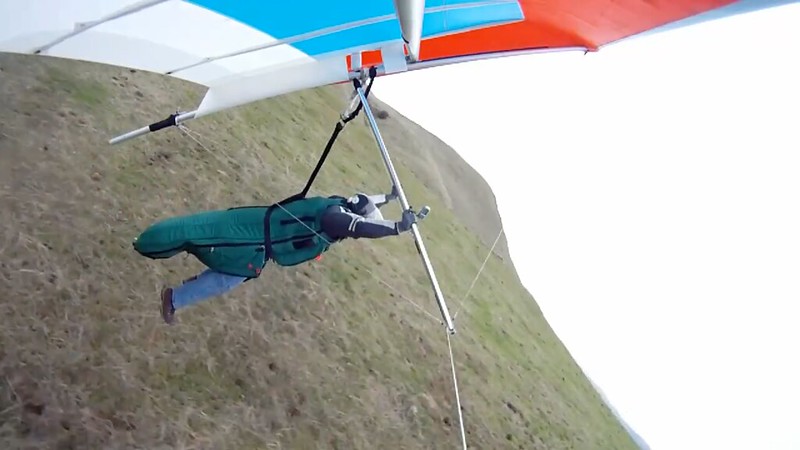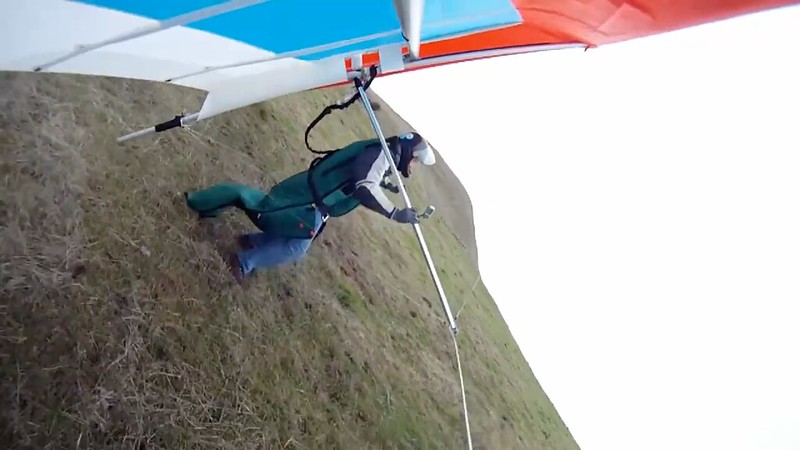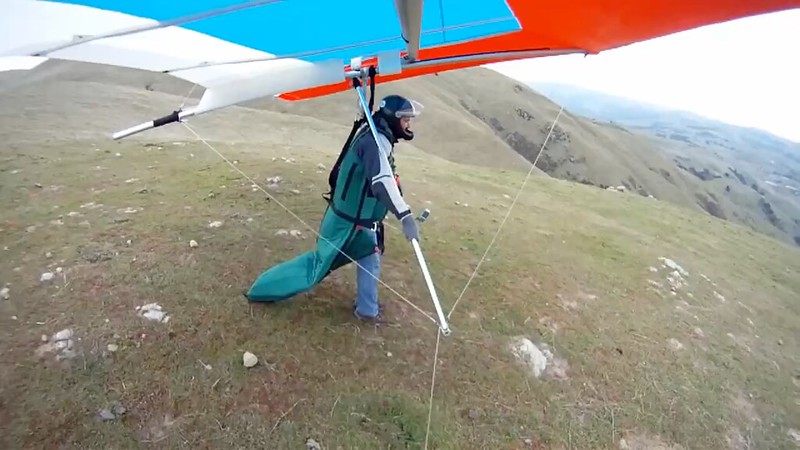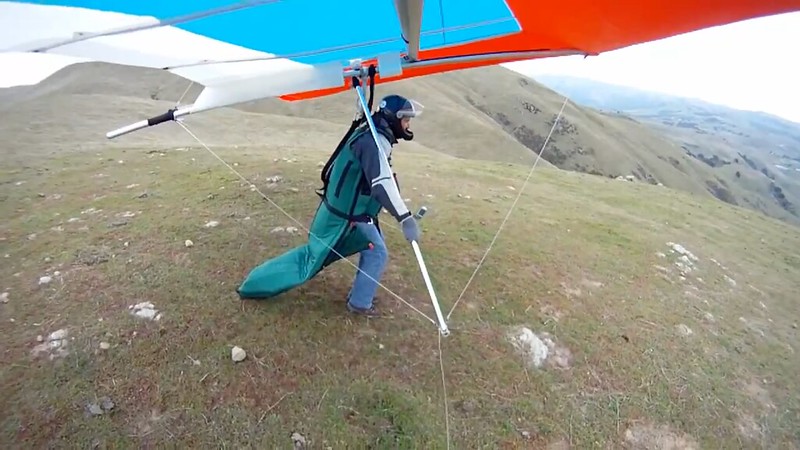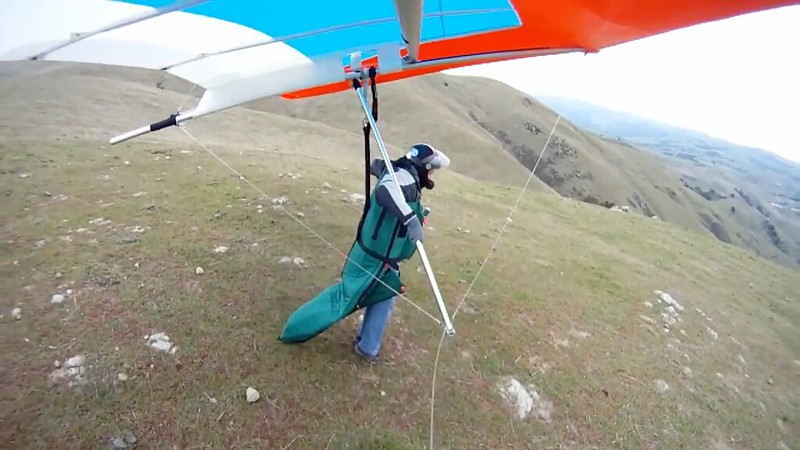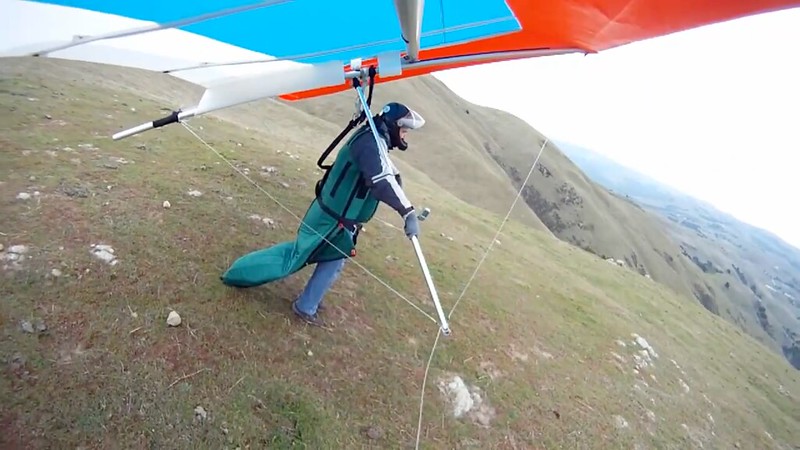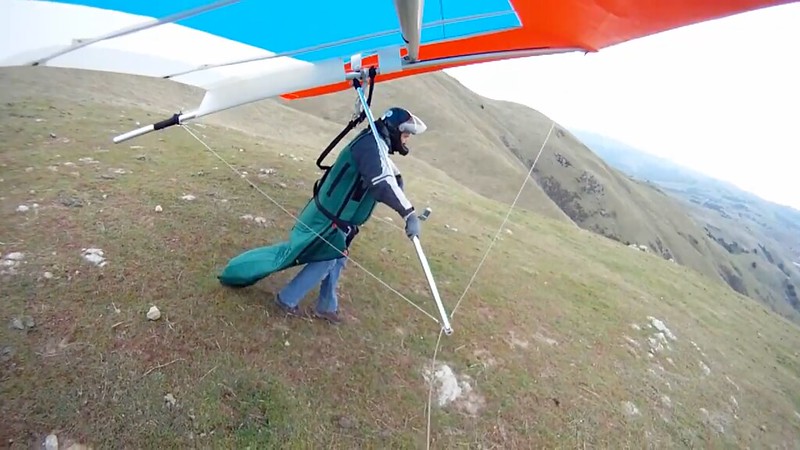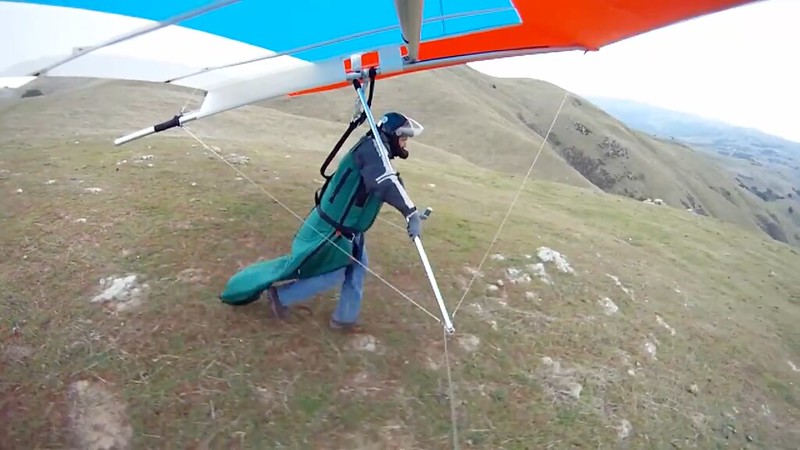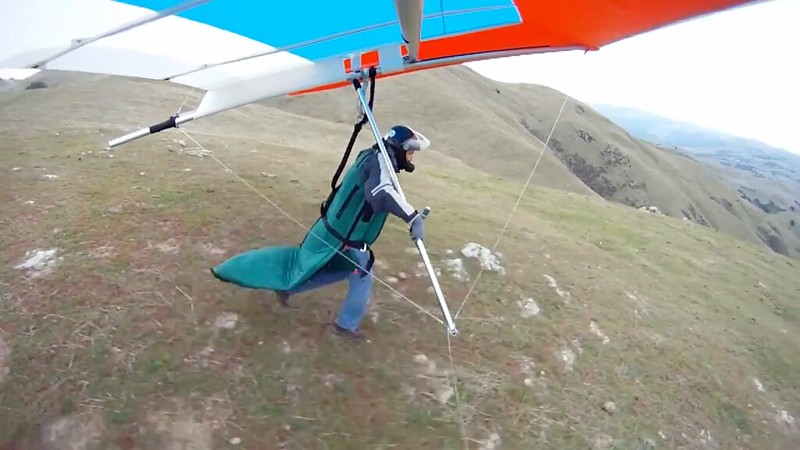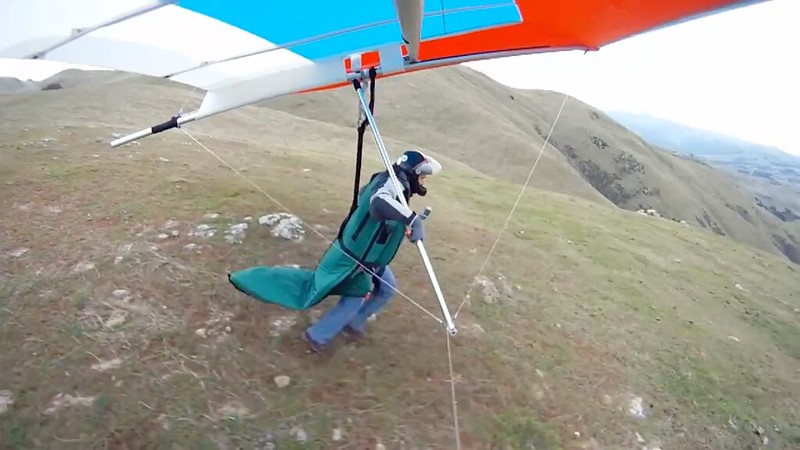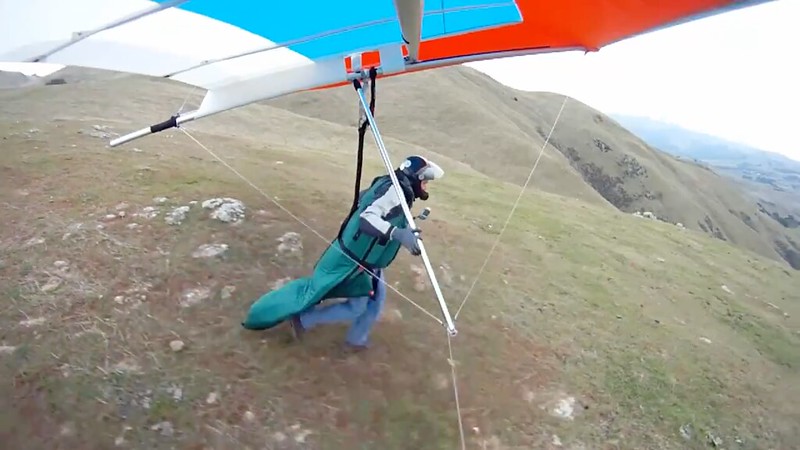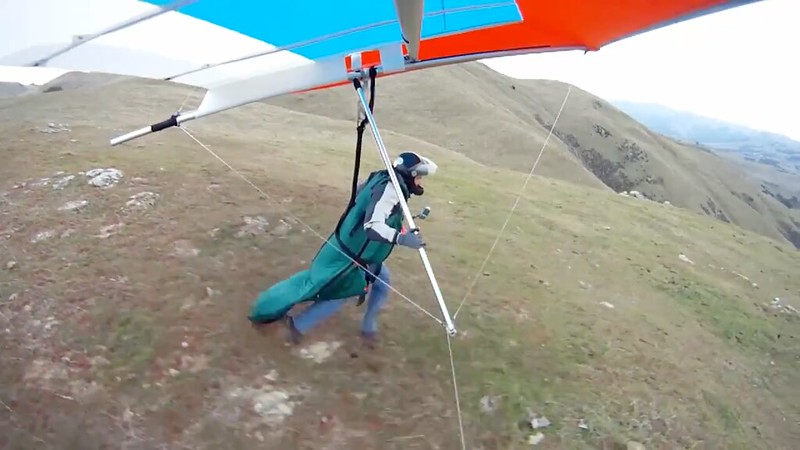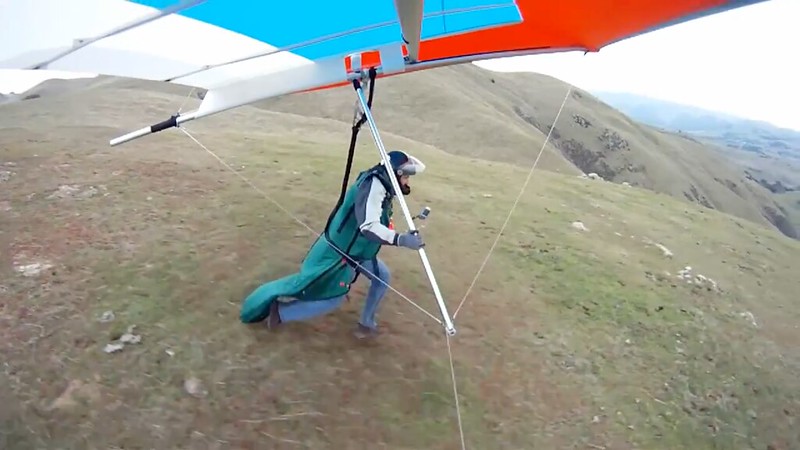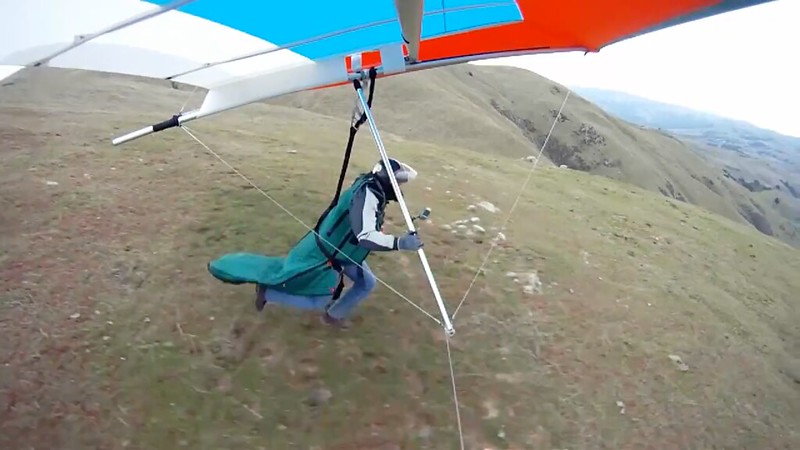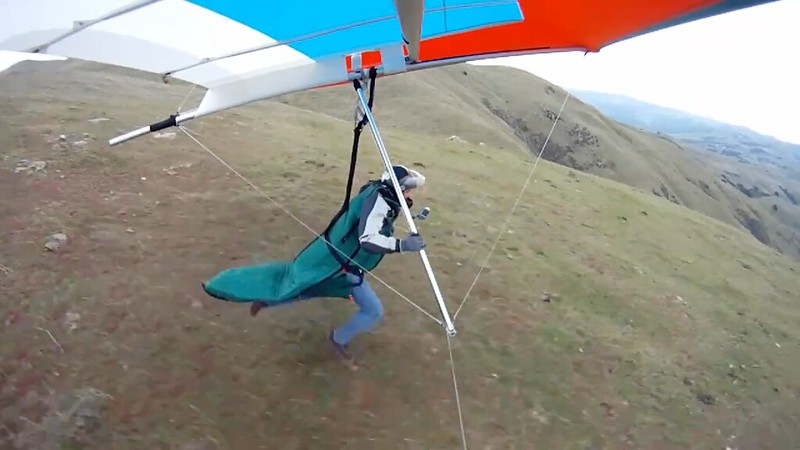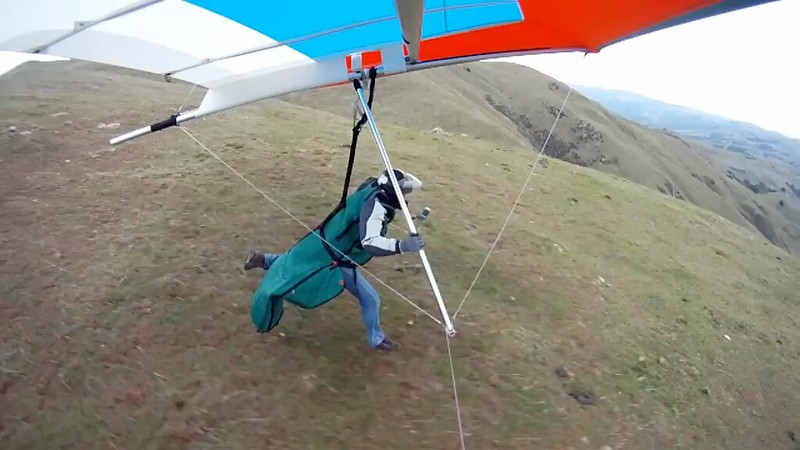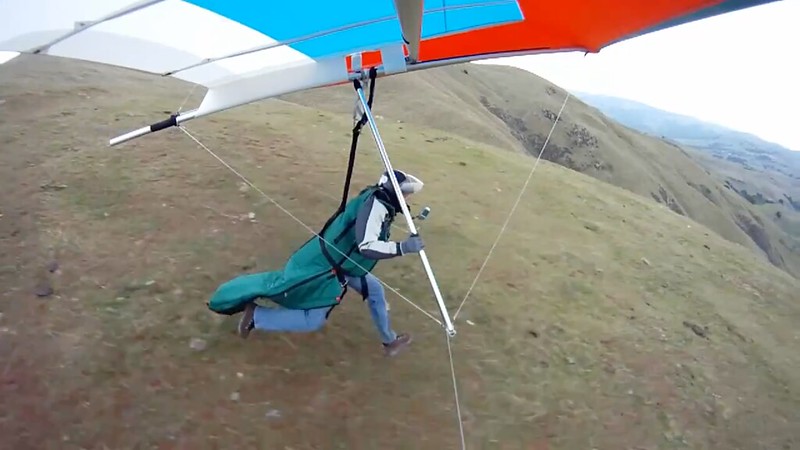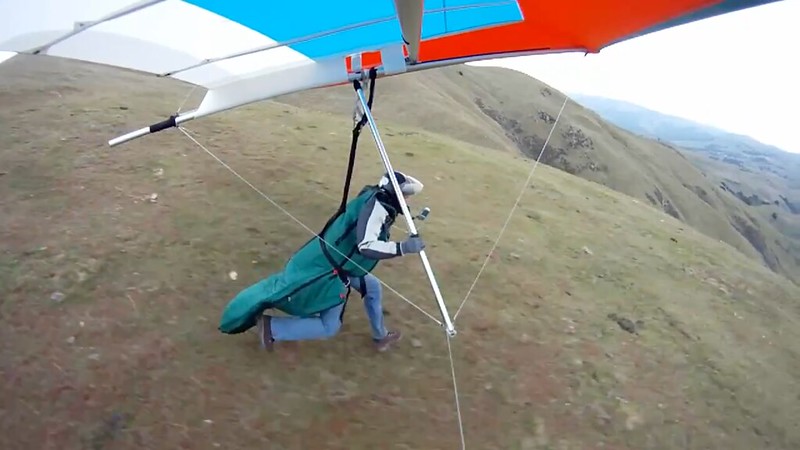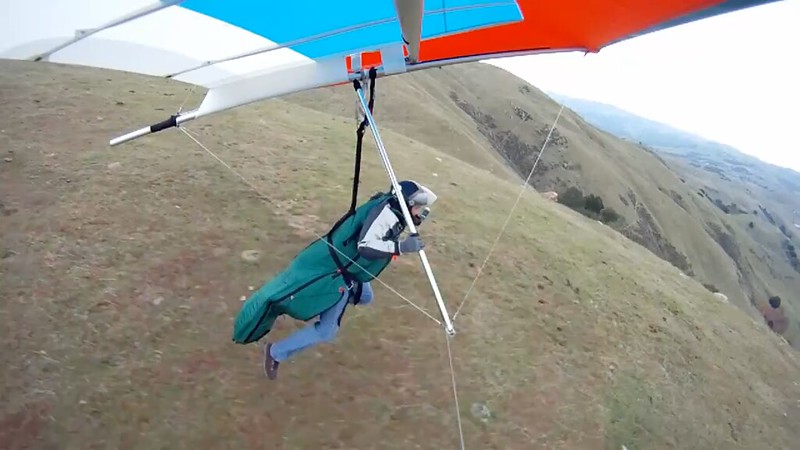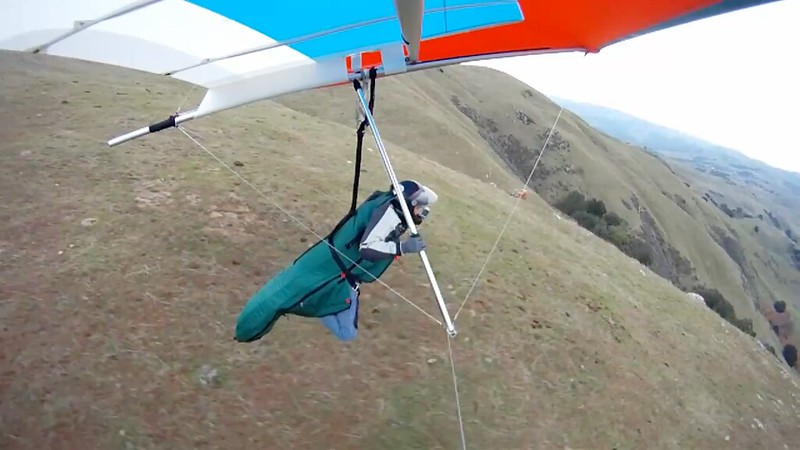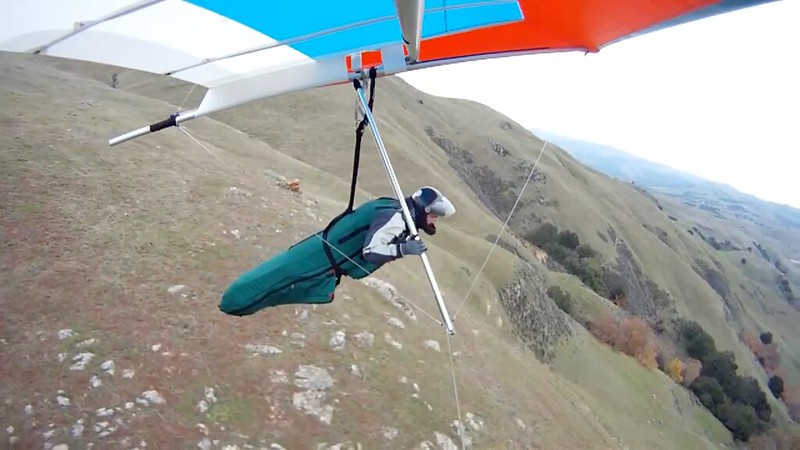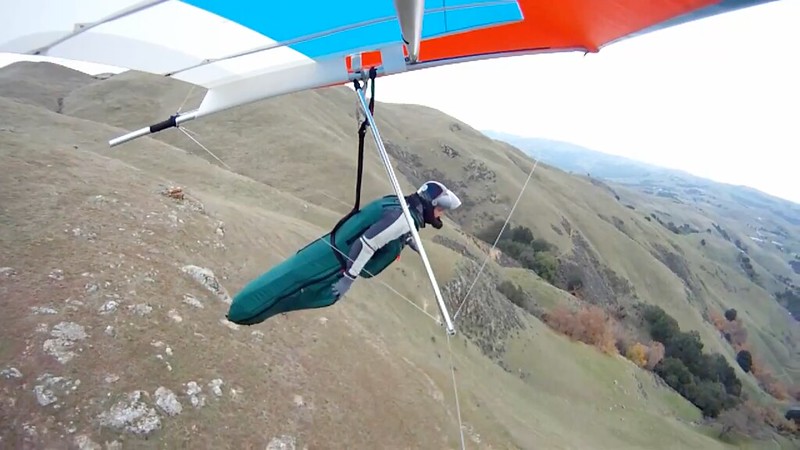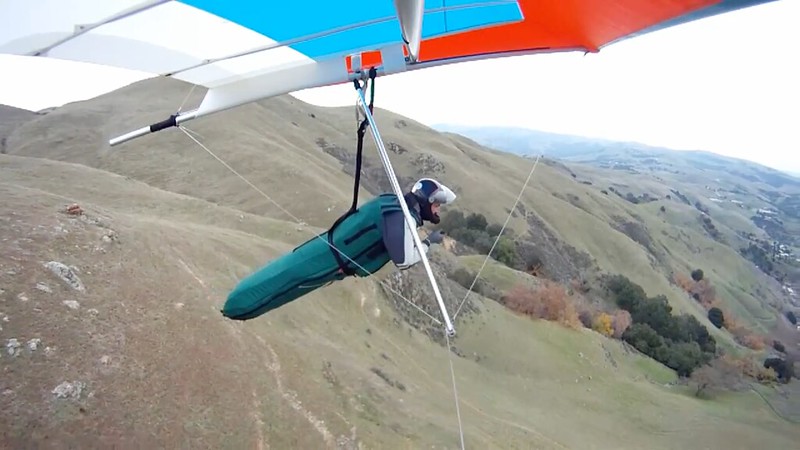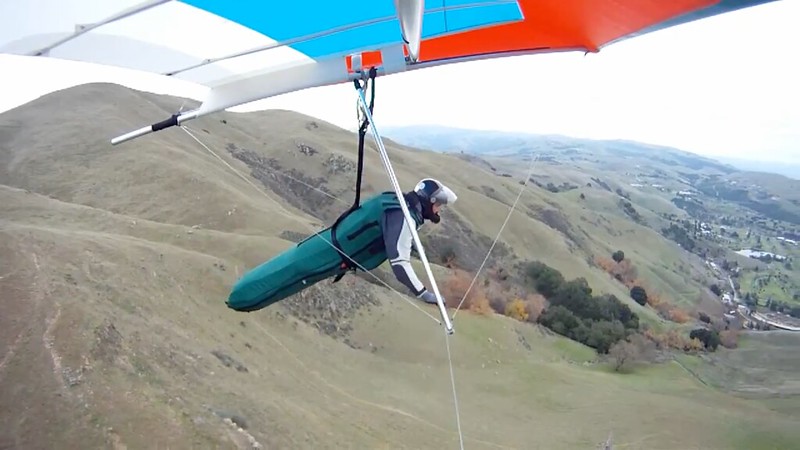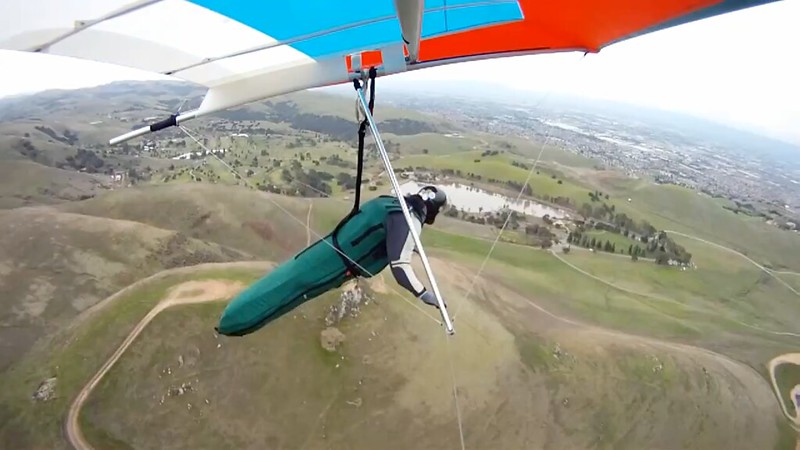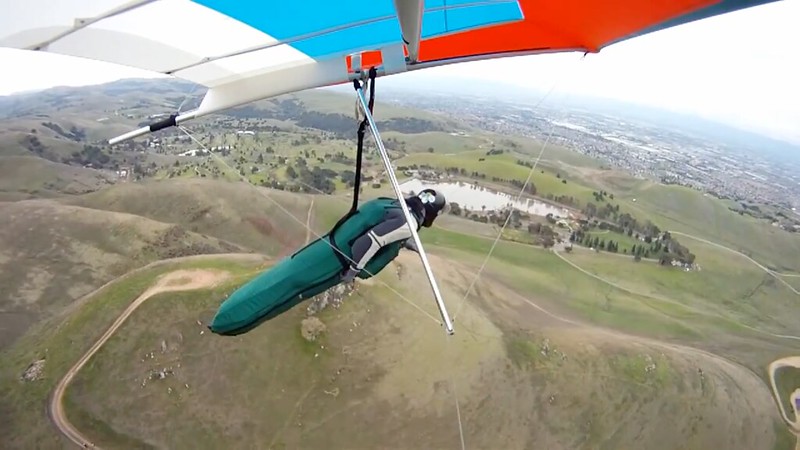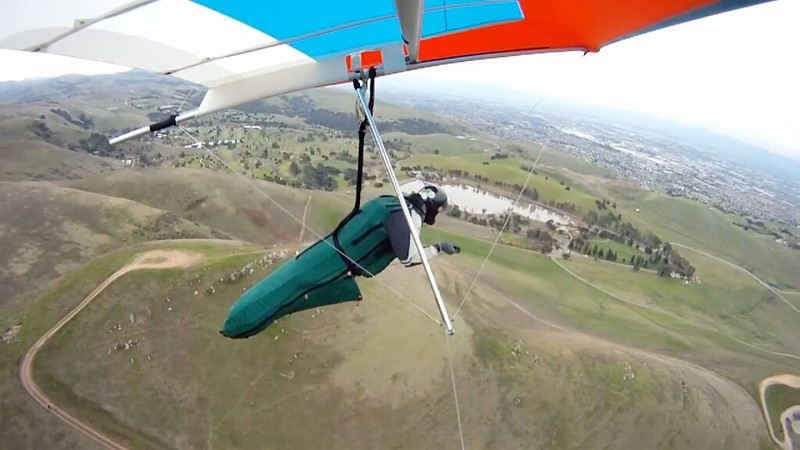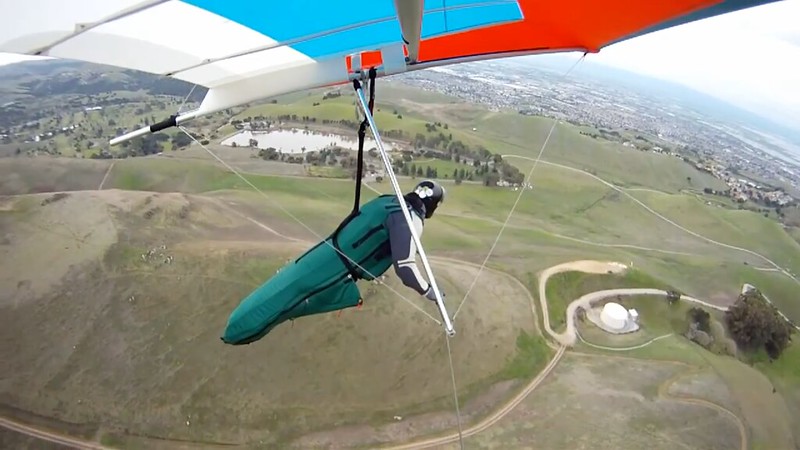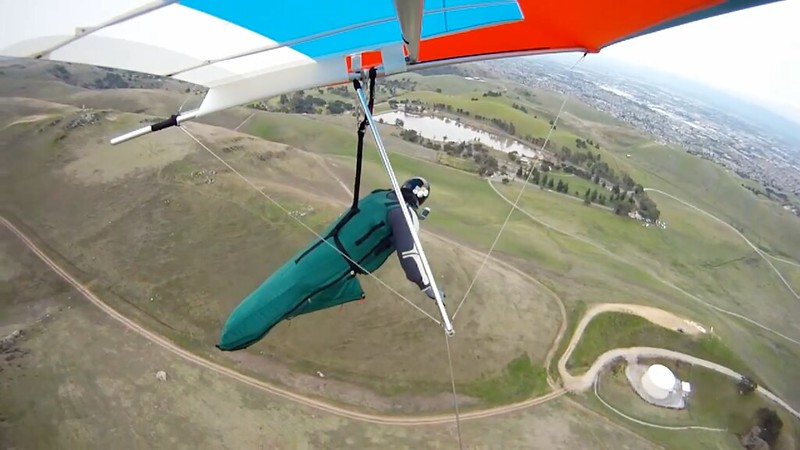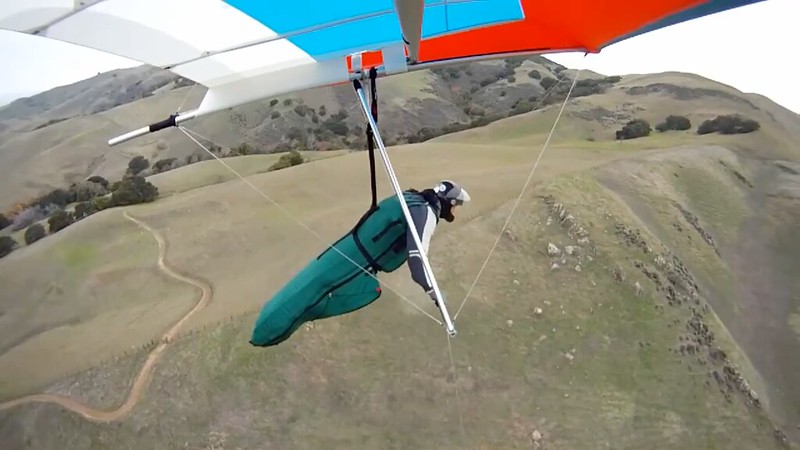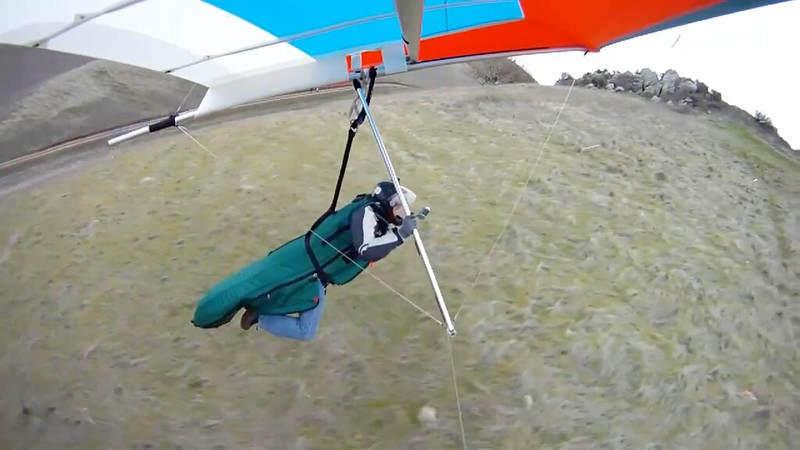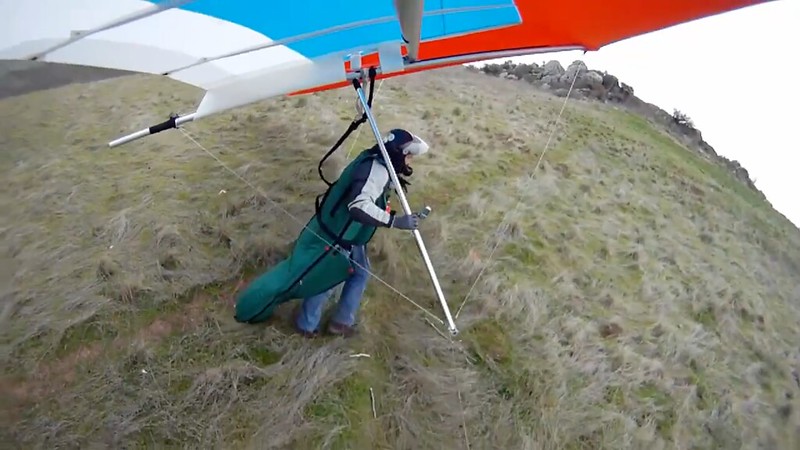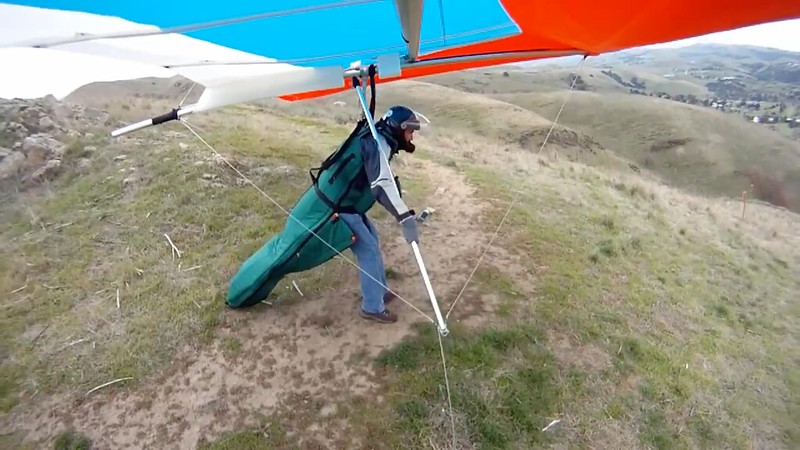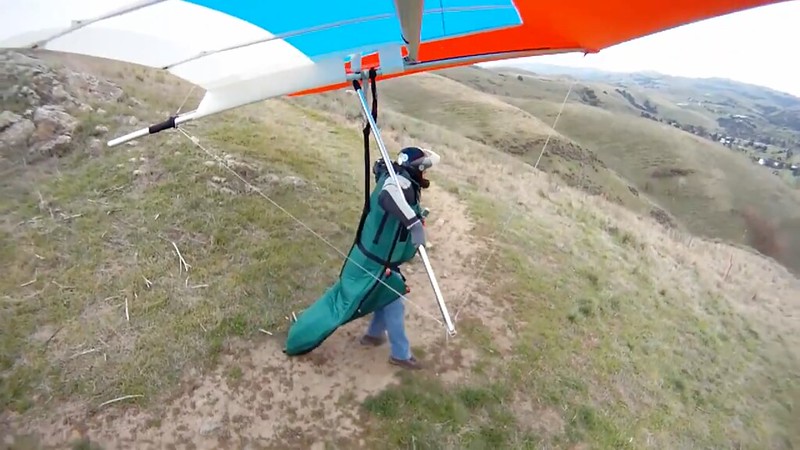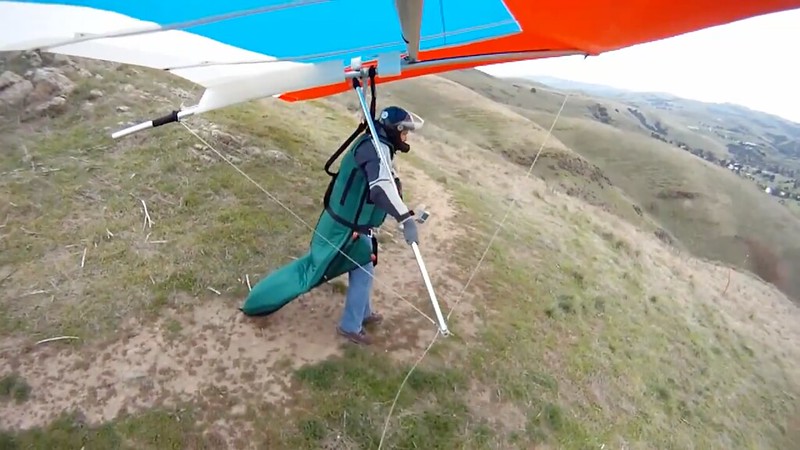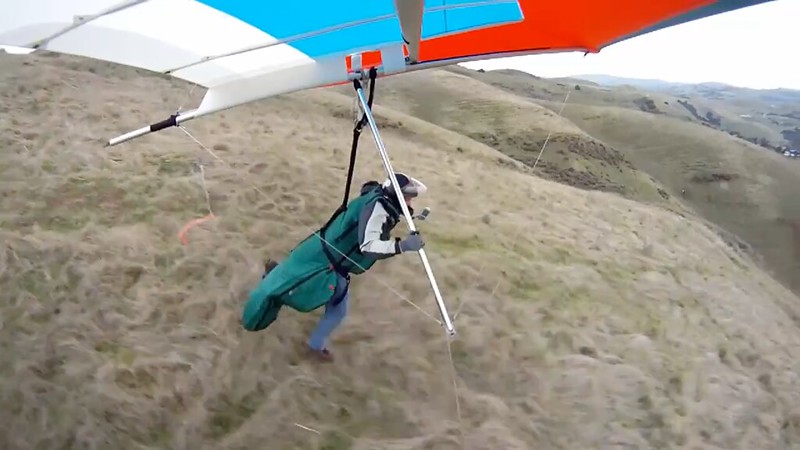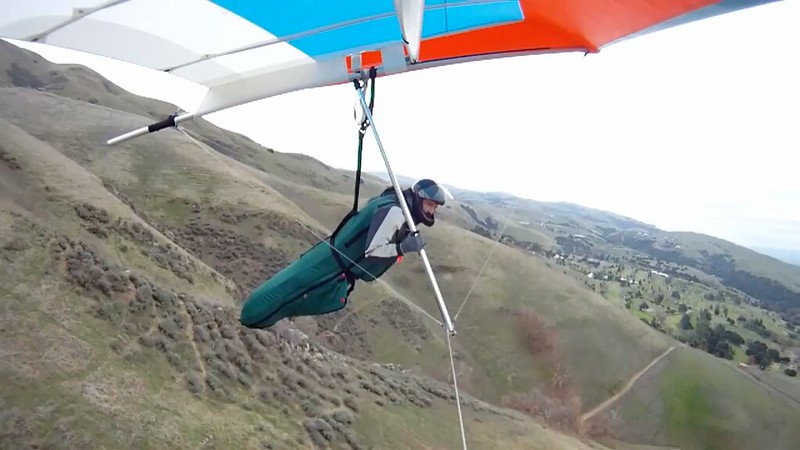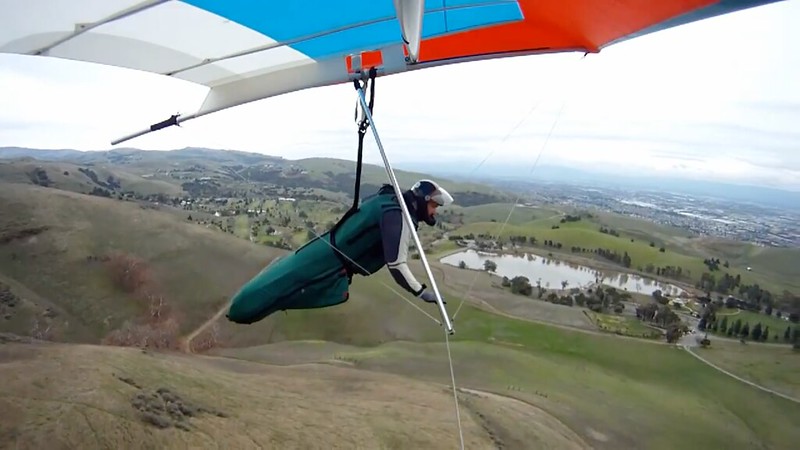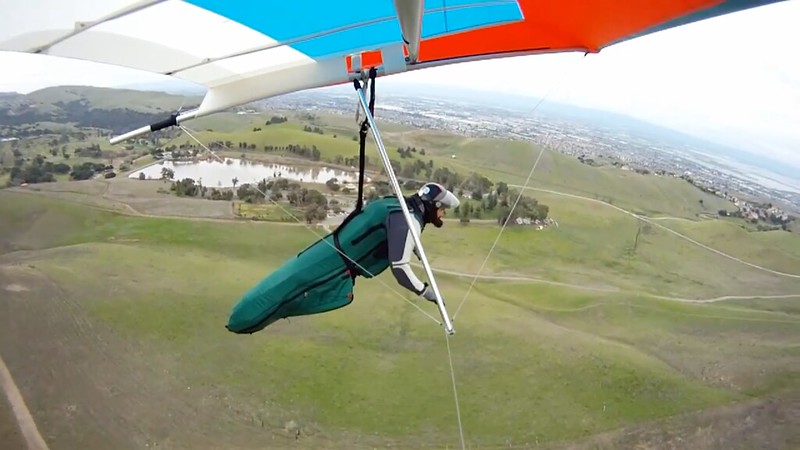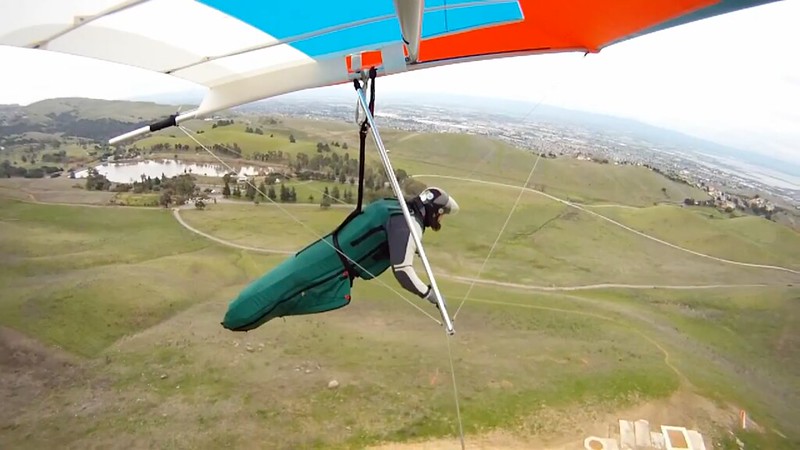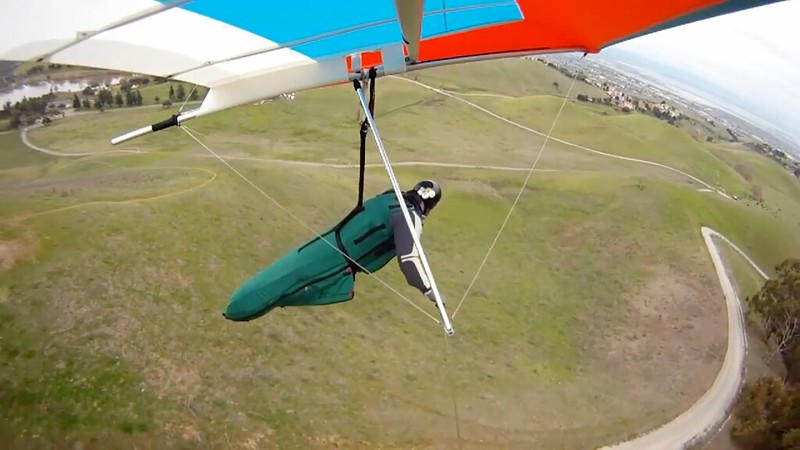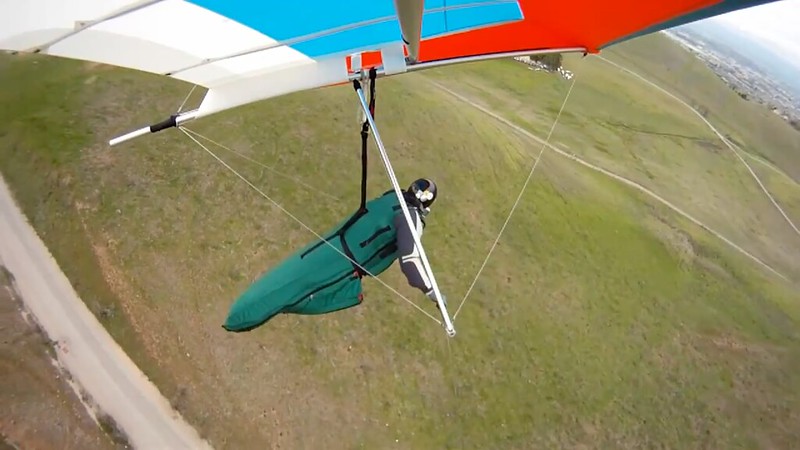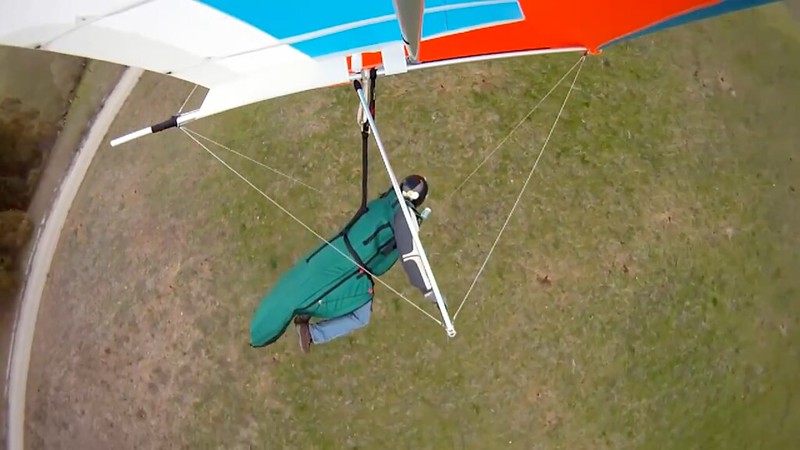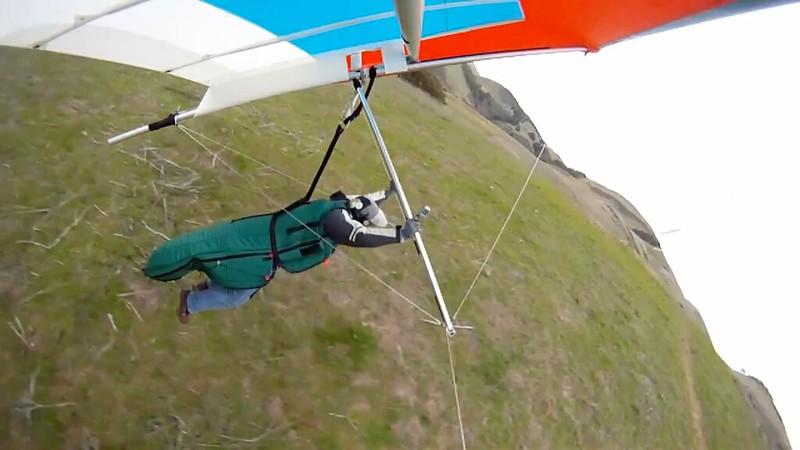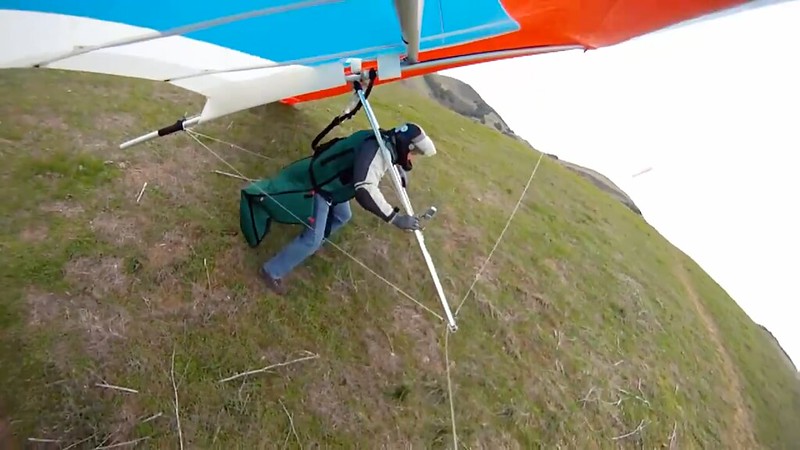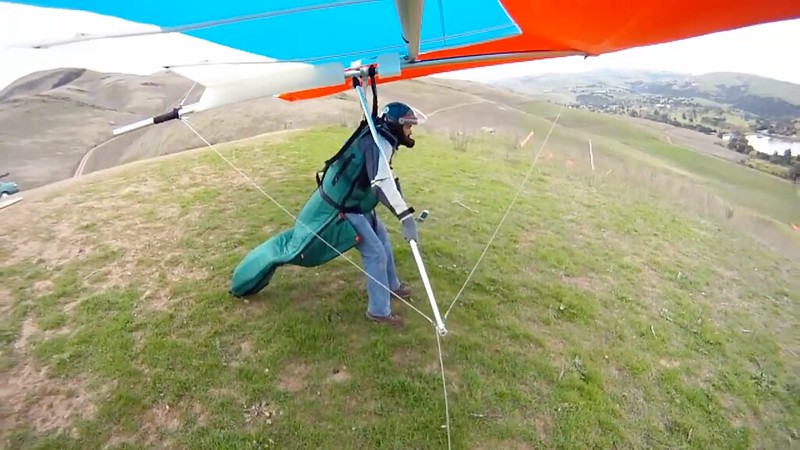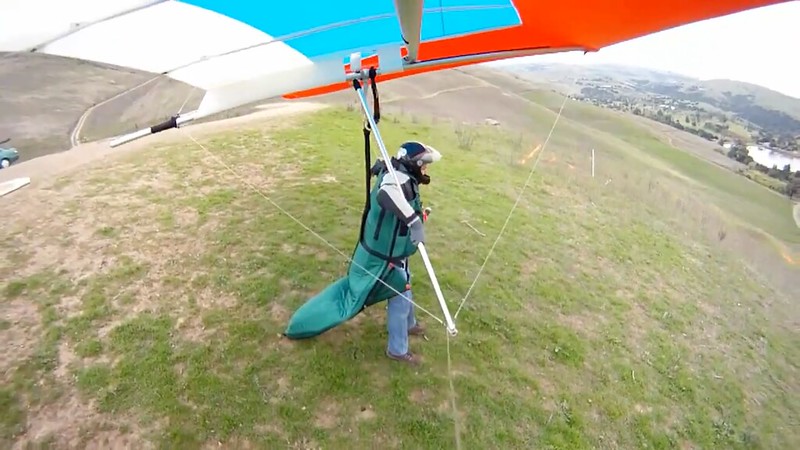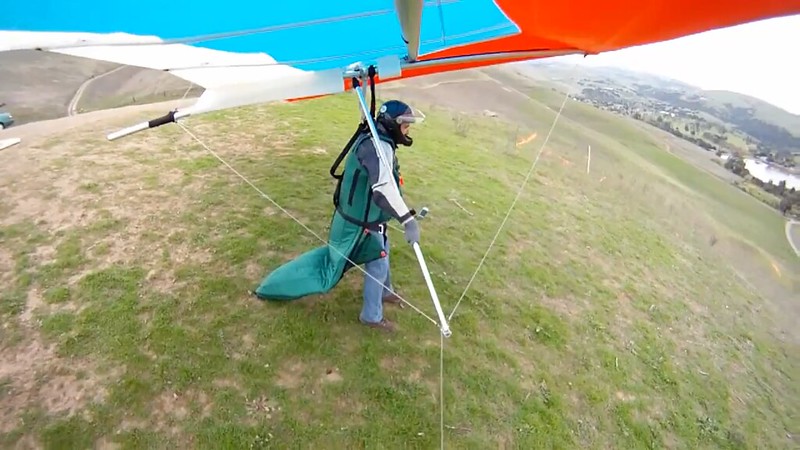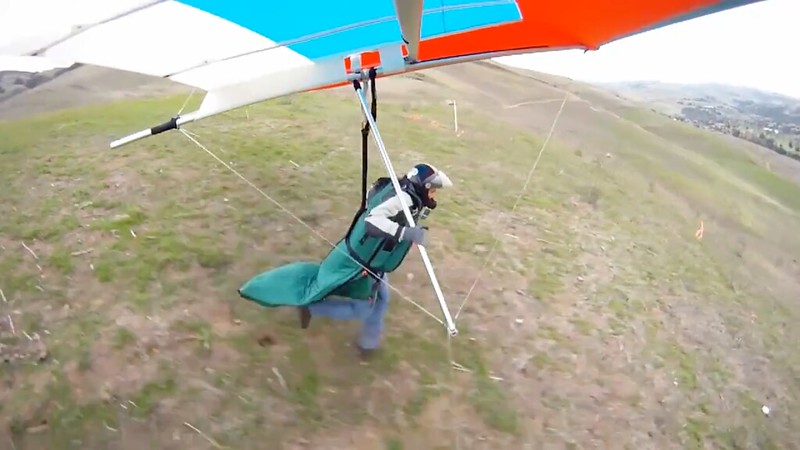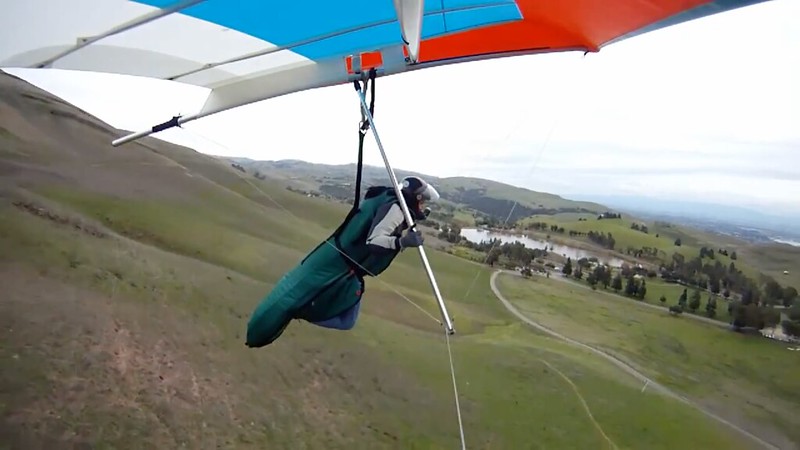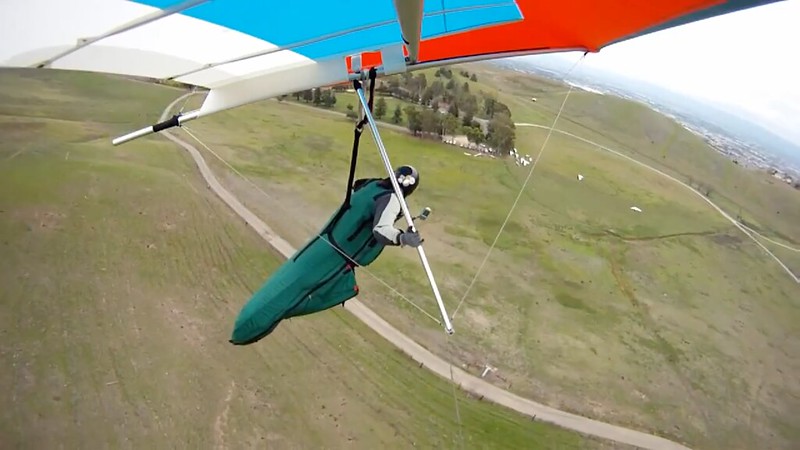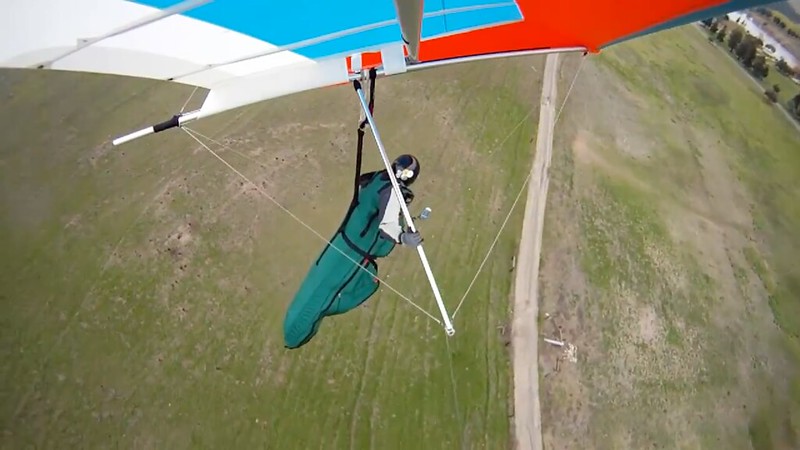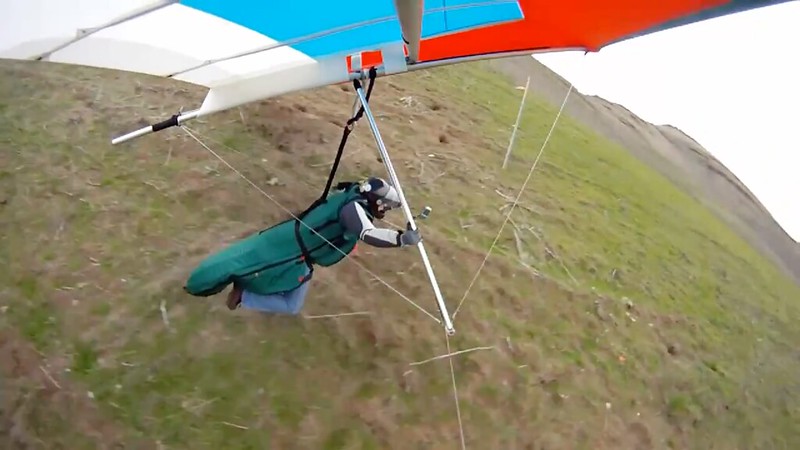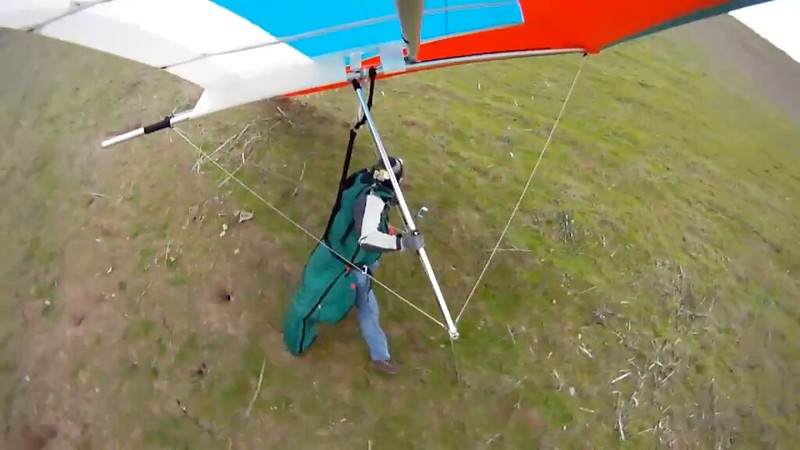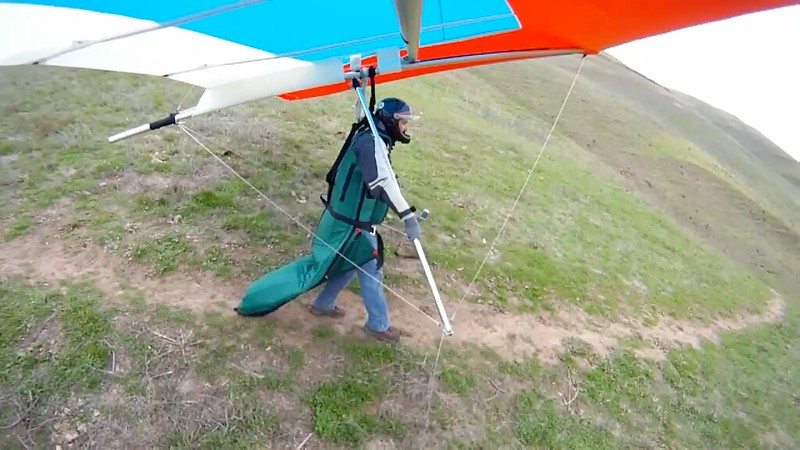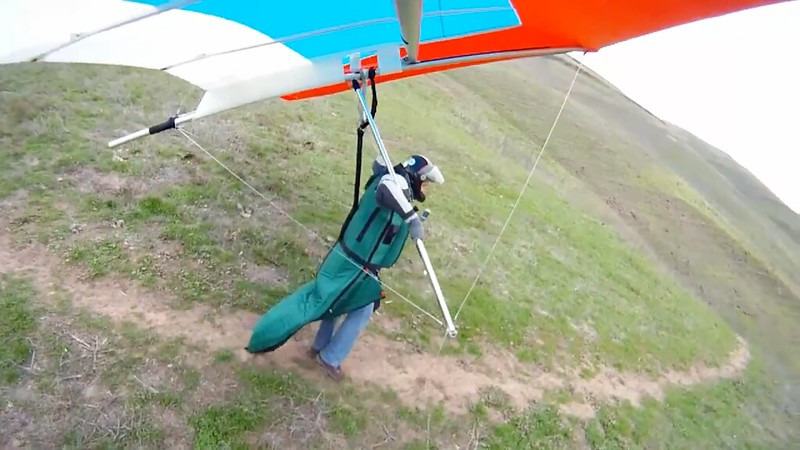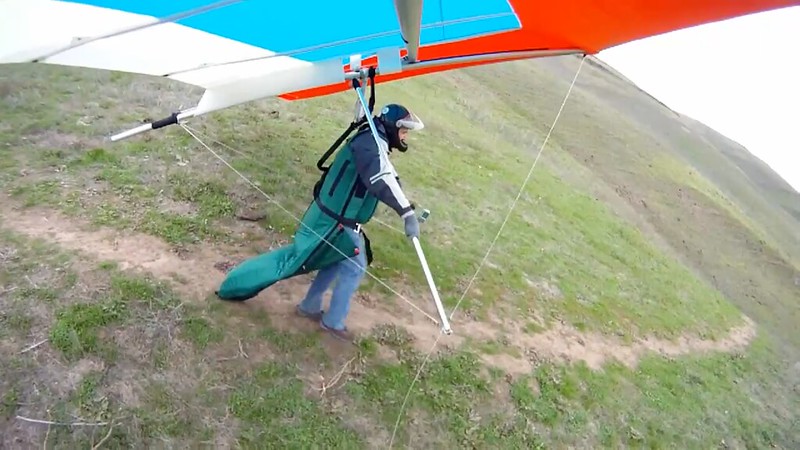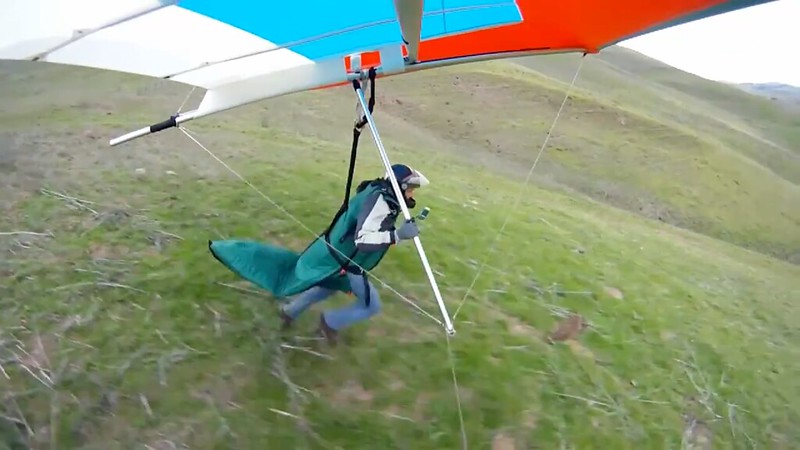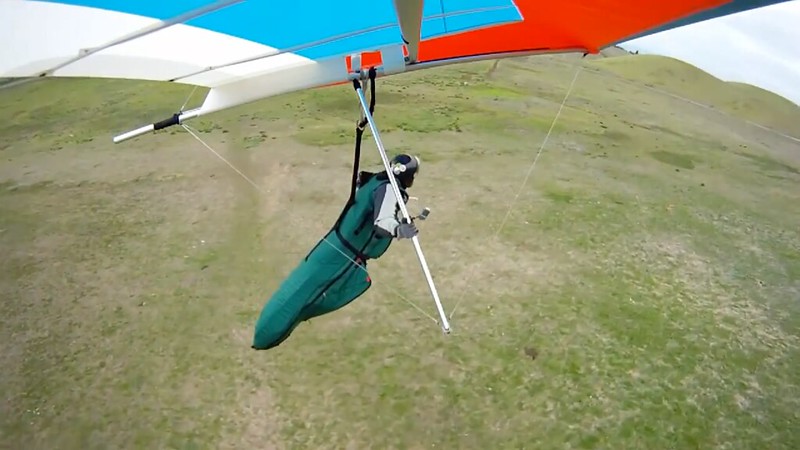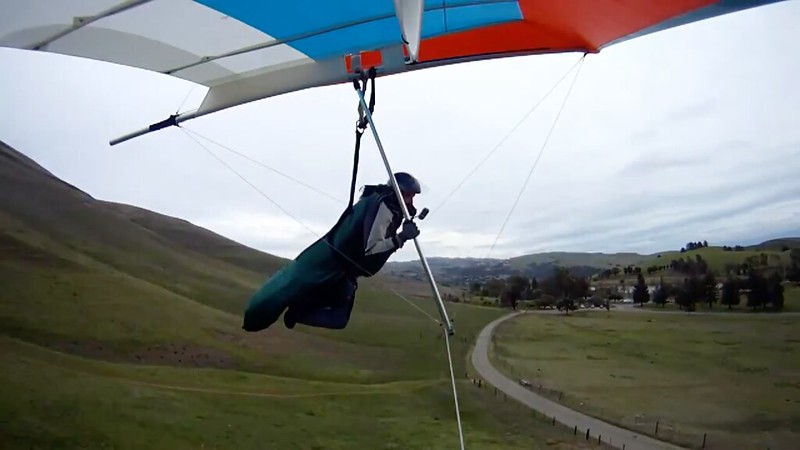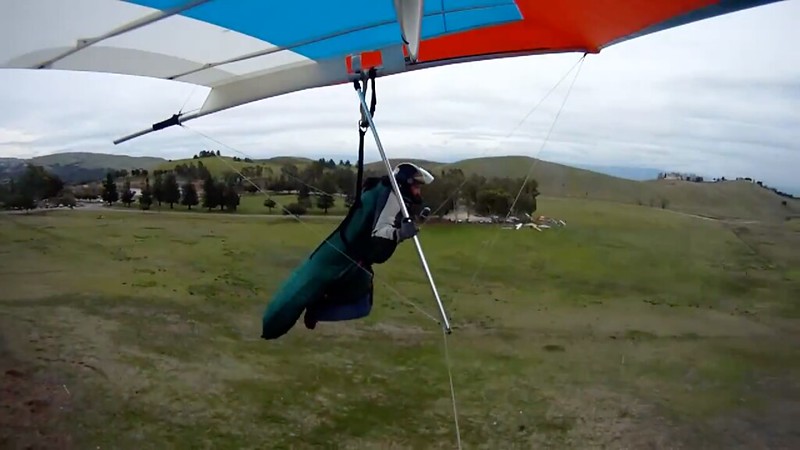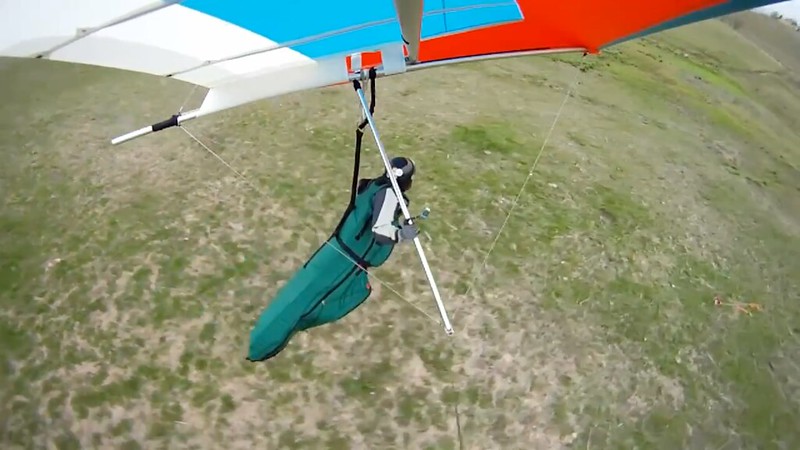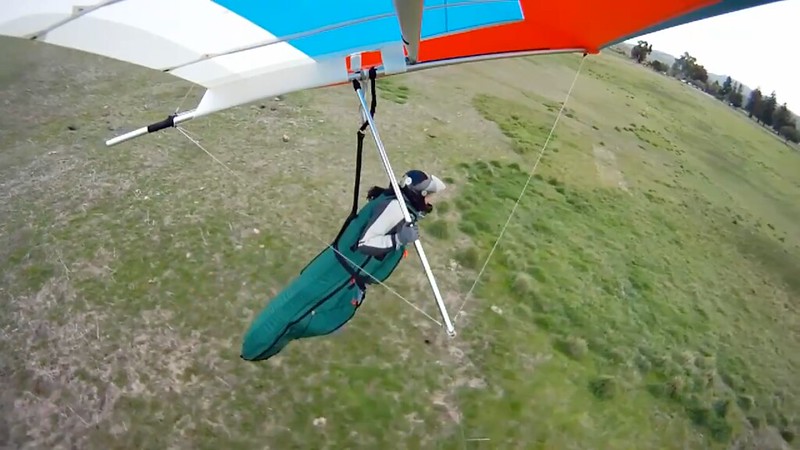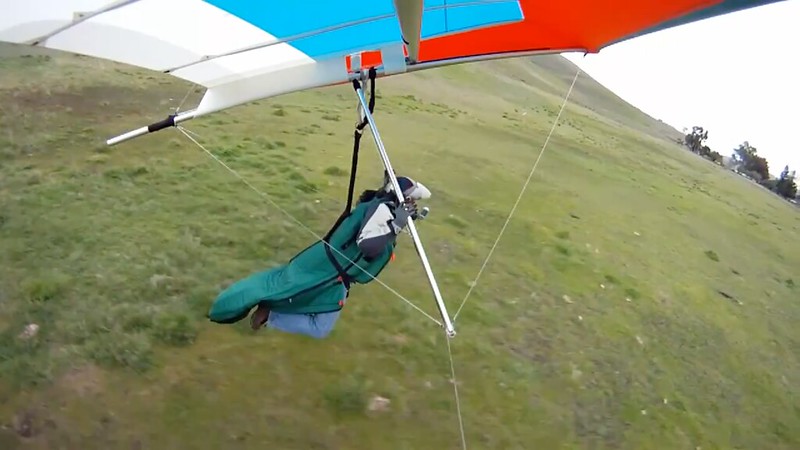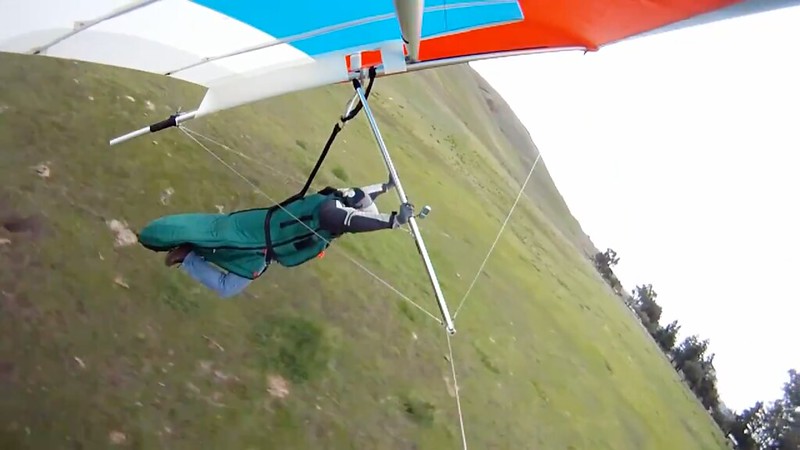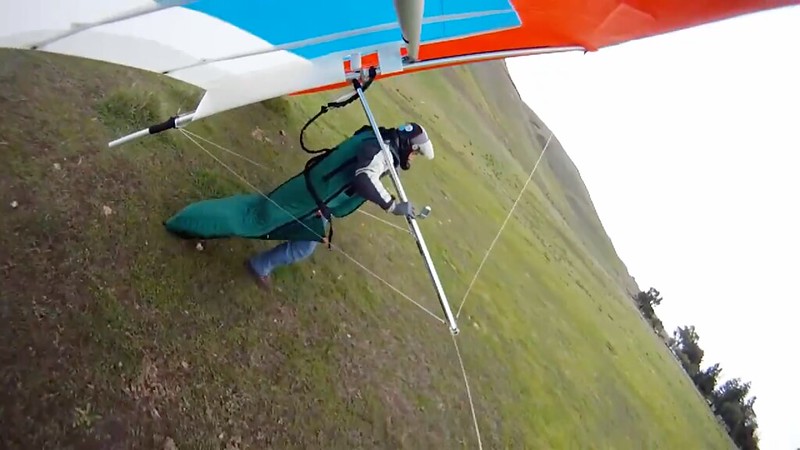http://www.ushawks.org/forum/viewtopic.php?f=36&t=2019
Hook-In Alarm
Harry Martin - 2015/12/23 03:33:01 UTC
I just finished reading Tad Eareckson's review of my hook-in alarm on his forum.
Here:
http://www.kitestrings.org/post8270.html#p8270
He spends a great deal of time ripping my article (from 1992) to pieces.
The article maybe. But not the author; device; motivation, thought, engineering that went into the device.
That's okay. Nothing wrong with that. I'm just puzzled why it took so long.
1. So much in hang gliding to rip apart, so little time.
2. I ripped gadgets apart in the article:
http://www.energykitesystems.net/Lift/hgh/TadEareckson/FTHI.pdf
I submitted for the magazine to Nick Greece on 2009/09/15. Joe Gregor should be getting back to me shortly to let me know whether or not it meets with his approval.
3. It wasn't until almost the end of my flying career, after Kunio and nearly three years after my last foot launch, that I realized that what I'd been doing since almost the beginning (fall of 1980) - fear plus lift and tug - was THE *UNIVERSAL* solution.
At the time I wrote that article, I was exploring electronic ways to reduce the possibility of FTHI, as were other pilots. He quite rightly stresses again and again the process of lifting the glider and feeling the leg loops, what I erroneously called the hang straps.
Yeah, maybe I should've picked up on that. Maybe the editor should have too.
Hang straps, leg loops, it's all part of the harness suspension.
Not really. The hang STRAP (singular) is a glider component and the second strap is moronic dangerous junk.
Something I have always done without thinking much about.
1. Even as you're lifting your wing into the turbulent jet stream?
2. I always tend to be thinking about what could happen if I DON'T lift the glider to feel the leg loops.
If I couldn't feel the leg loops, I didn't launch.
Should've said that in the article. Generally speaking an individual who comes up with or adopts a new sure-fire strategy to prevent unhooked launches will not permit mention of the hook-in check.
Quite right and the correct practice that has never failed me. Flying a Fledge 2 teaches you to do that because for me, it's damn near impossible to launch a Fledge as it is VERY tail heavy.
That's why they invented launch dollies and platforms.
If you can't feel the leg loops tugging at your legs, crotch, and butt, the glider won't launch because as you start your run, the tail will drop and you will just be dragging a stalled dead glider behind you. You stop dead in your tracks.
Or in the case of a cliff launch you just stop dead way below the ramp.
I always did anyway. Feeling the leg loops, the Fledge is easier to balance as you start your run. Plain and simple.
And you never died as a consequence of your wing being engulfed in the turbulent jet stream. Go figure.
I never installed the hook-in alarm on my Fledge because I knew it wouldn't make any difference, but on my WW, I figured it might. Also, on the Fledge, you don't hook into a hang strap. There is none, only a bracket and a bolt. It never had a backup strap either.
No glider should.
The practice of lifting my glider and feeling the leg loops has always worked for me, even while flying other gliders. Enough said there.
I wish. Doug Hildreth started saying it 35 years ago and still no instructors teach it and hardly anyone does it.
Had I read FTHI.pdf by Tad Eareckson, I probably would have never built the device. It was a curiosity to me back then. In all the years I've had it and used it, it actually prevented only one FTHI. In this case, I lifted the glider and the alarm started wailing. I hadn't fully lifted the glider yet to test the leg loops, but I did pause before launching because of the alarm. It could have been that one time I didn't test my straps.
1. I've ALWAYS been afraid of launching unhooked and NEVER COME ANYWHERE *CLOSE* to forgetting/omitting the hook-in check.
2. It wouldn't have been. If you'd always tested them before and continued to after you wouldn't have ONCE skipped. And if you had it wouldn't have lined up with the one time you happened not to be hooked in. But this does illustrate the main problem involved with gadgets. They make you feel safer - a bit like the Aussie Method. No alarm / I'm in my harness - therefore I must be safely connected to the glider under which I'm standing.
Since the sensor was installed in the backup strap, I set the glider down and hooked into the backup and missed the main.
Which you wouldn't have done if there hadn't been a backup. Told ya they just make the glider more dangerous.
I lifted the glider, felt the leg loops, then performed a successful launch. The glider was a WW Sport 150, much easier to launch than a Fledge. Easier to pickup and launch even when not hooked in.
Also, at the time, it was common to have backup straps and I can't remember why...
Mike Meier - 2005/08/~18
Years ago we didn't even put backup hang loops on our gliders (there's no other component on your glider that is backed up, and there are plenty of other components that are more likely to fail, and where the failure would be just as serious), but for some reason the whole backup hang loop thing is a big psychological need for most pilots.
Catering to hang glider "pilot" stupidity.
...other than maybe there was hang strap failures...
No.
...leading up to folks adding multiple straps and extra carabiners.
How many unhooked launch fatalities have we had that have led up to folk adding hook-in checks to their launch sequences?
I remember when there were carabiner failures.
Abused aluminum carabiner failures.
Anyway, I'm posting this because others have tried to design similar devices and they might like to know a bit more about its history and whether it was a failure or a success. After reading Tad's essay, I'm more inclined to remove the device and the extra hang strap. The device continues to work, but it does add complexity to the glider.
Which is only a bad thing if the complexity serves no purpose or introduces weight, drag, problems.
That's the right call. I don't feel good about you pulling your gadget because I DO appreciate and admire people working on and developing solutions to problems and yours is well thought out and nicely engineered, but...
http://www.hanggliding.org/viewtopic.php?t=26557
Failure to hook in 6/29/12
Alan Deikman - 2012/07/17 17:57:38 UTC
I designed a mechanism to prevent FTHI which I think would be pretty effective, probably with the same failure rate as the glider itself. I will never implement it, and if I applied for a patent it would be for the express purpose of stopping anyone else from implementing it.
If you don't understand why then I don't think you understand the central issue on this topic.
A *PILOT* MUST be afraid of launching unhooked at the moment of commitment and MUST execute the physical check as the beginning of his launch sequence - EVERY TIME. And a gadget - 'specially a well thought out and engineered one - will only serve to reduce the fear and as an excuse to skip the physical check.
OK, Rick...
http://www.ushawks.org/forum/viewtopic.php?f=2&t=802
AL's Second flight at Packsaddle how it went
Rick Masters - 2011/10/19 22:47:17 UTC
Al, there's a lot of noise on this thread but if I can just cut through it, I'd like to provide my observations to your excellently detailed account.
A lot of focus is put on hooking in. Too many pilots have died for no good reason. It was never a problem for me. Before lifting the glider, I would lay down and check my distance from the control bar. I always did this. It was part of my unalterable routine. It just took a moment and then I would shoulder the glider. I would stand and allow the wind to lift the wing. I would stand and fly the wing with gentle tension on my hang strap. Then I would identify the neutral lift attitude where the wing weighed nothing - and hold it.
At that moment, I would banish all concern about launching unhooked. I had taken care of it. It was done. It was out of my mind.
Now I would look downslope. I would verify that the bushes or trees below were waving slightly. If they were, I knew that I would encounter lift during and at the end of my run.
Now I would look to one side to see how wide the lift band was AND to see if there was approaching traffic. Then I would look to the other side. If bushes and trees or flags were moving about the same far to either side, I could be assured that I was in uniform ridgelift or in the center of a large thermal updraft. In the event of a large thermal updraft, there is no time to delay because it will not last and you must launch into the first half as it approaches launch.
Now you look to your wireman. His fingers should be "O's" around your nose wires and not touching them. Now you have met all conditions. Timing is of the essence. You yell "Clear!", the wire man dives to the side and you run, holding a neutral angle of attack.
Start running your idiot fucking mouth again.

